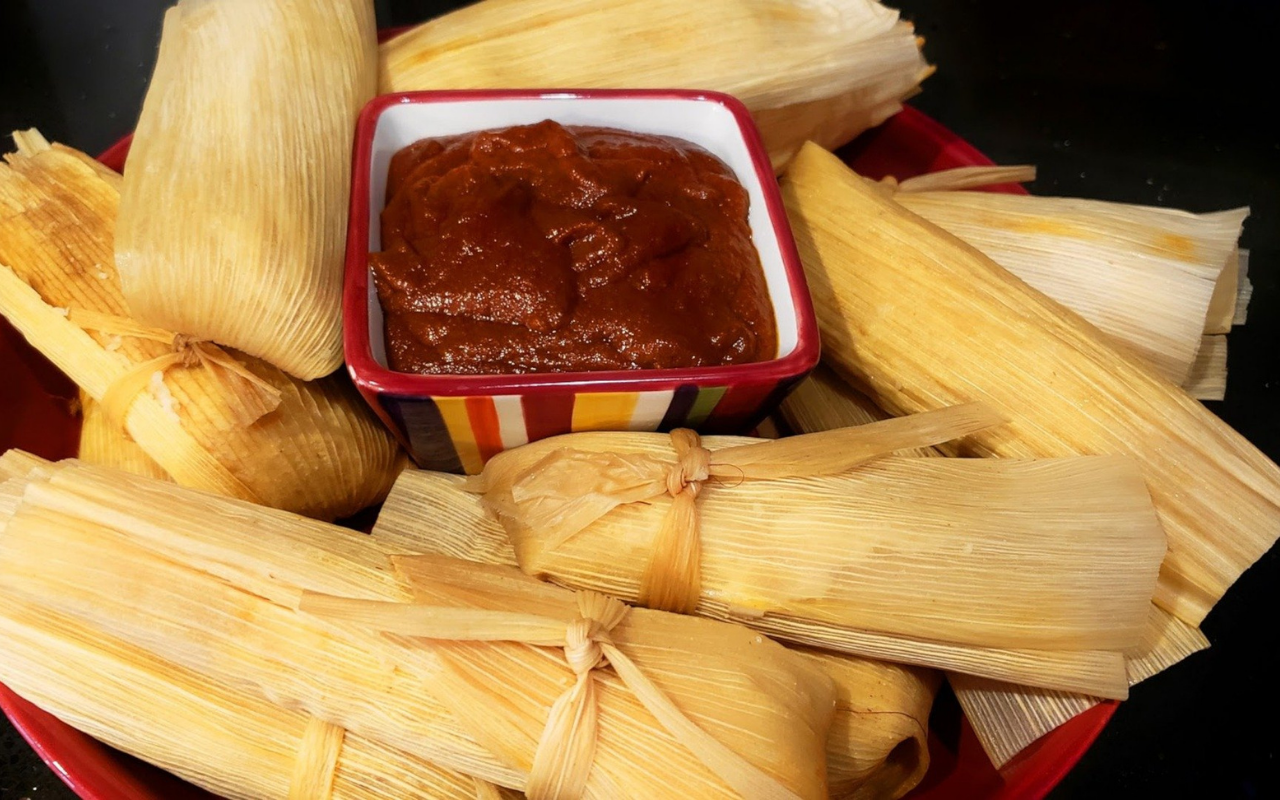Tamales are a hugely popular dish that I’m sure you’ve heard of. The most commonly known version is the Mexican tamale, made of masa from ground maize (specially prepared corn), filled with chiles and some meat, usually chicken or pork, wrapped in dried-out corn leaves and steamed to perfection. Seeing that I’m Mexican, this is my favorite type of tamale.
Tamales are a Pre-Columbian dish that originated in Mesoamerica roughly 2000 years ago in present-day Mexico, Guatemala, Belize, El Salvador, Honduras, Nicaragua, and Costa Rica.
Nowadays there are all kinds of tamales from different Latin and Hispanic nations. Some tamales are in banana leaves, some in corn husks, some are on the drier side, some are very moist, some are savory, and some are sweet! There are several options to choose from, and you can’t go wrong with what you pick. Everyone has adopted the dish to their own liking and cuisine style. It may even be called something different depending on the country.
Not only are there various types of tamales across nations, but even within the same country, there can be different versions. For instance, in Mexico, you can find the classic tamale, tamale de elote, which are made of a softer masa without the filling and more maize; tamale de frijol, which is several layers of masa and a thick bean spread; tamale de raja, which typically has no meat but is filled with various chiles and veggies, and tamales dulces, which have a sweet pink masa and raisins. Even across Mexican states there are different tamales!
(Fun fact: Venezuela has hallacas. They look very similar to a tamale however they are not considered tamales. They are different in flavor, texture, and ingredients. Try not to confuse the two!)
Many Latin families typically feast on tamales around the holidays. But no one has to wait until the end of the year to enjoy a hot tamale. They’re typically available in various Latin shops and food stands year-round. I usually find the best ones in the local Mexican bakeries, but I’m a little biased.
In my family, we like to divide the work between the person who soaks the dried-out corn husks in warm water to soften them and get them ready for wrapping, the person (or people) who make the filling(s) since we like to make different versions of tamales in one go, and the person who prepares the masa. Four to five people are ideal, but you can work in smaller numbers. As I said, by making different types of tamales my family typically prepares them in bulk. At the end, we all pitch in by assembling the tamales, reassigning the roles to the ones who spread the masa on the soaked husks and the ones who put the filling and close up the tamale. Finally, they all go into the pot that we call evaporera for them to be cooked in steam.
You can purchase your tamales, or you can try making them yourself! I personally find the latter to be more fun and tastier. You can gather a group of friends to make it more enjoyable (and a little easier by splitting the work). Good food brings everyone closer!
Go out and enjoy some hot tamales this National Tamale Day!
Her Nexx Chapter invites you to join our free Community where women from around the world are connecting with each other’s stories, exploring different experiences, and transforming ideas.
The Future of Connection for Women
Follow us:







